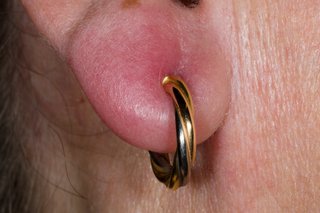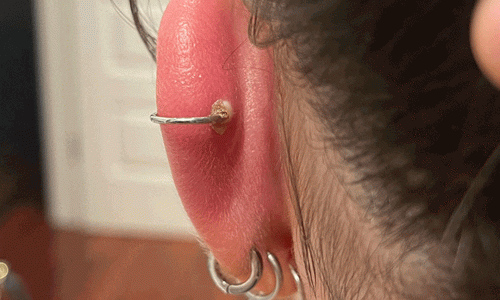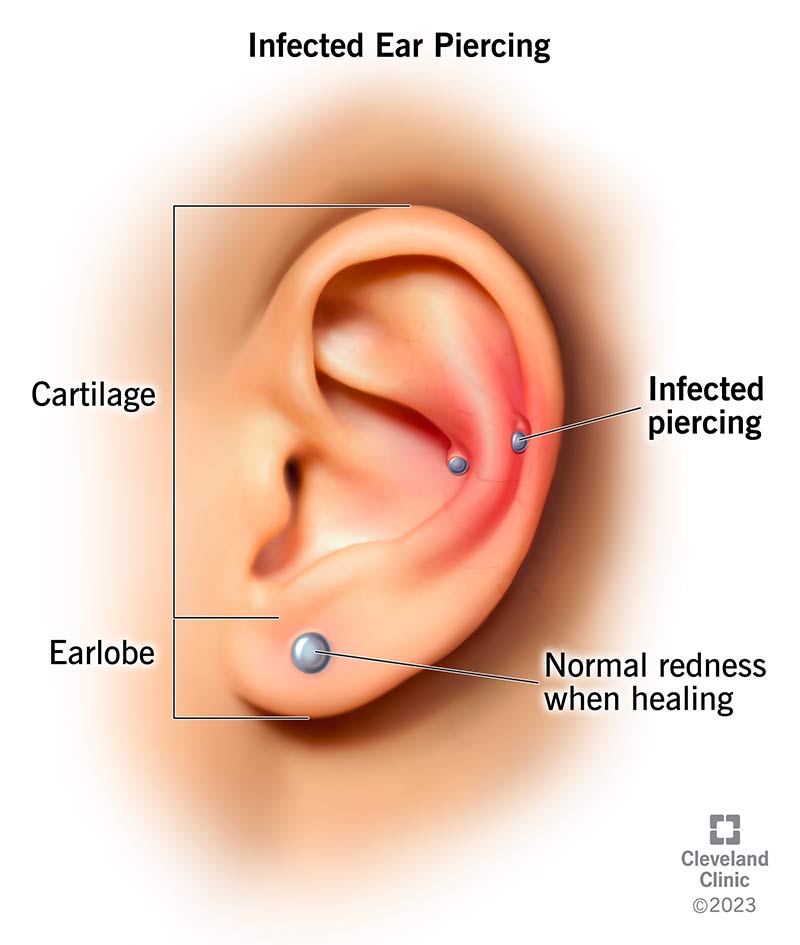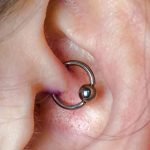Getting a piercing can be fun. It allows you to express yourself. But sometimes, things can go wrong. One common issue is infection. This article will help you understand if your piercing is infected. We will cover signs of infection, how to treat it, and when to see a doctor.

Credit: www.nhs.uk
What is a Piercing Infection?
A piercing infection happens when germs enter the body through the hole. The body reacts to these germs. This can cause swelling, pain, and other problems. Most infections are not serious. But some can cause issues if not treated.
Signs of an Infected Piercing
It is important to know the signs of infection. Here are some common signs:
- Redness: The skin around the piercing may turn red.
- Swelling: The area may swell up and feel puffy.
- Pain: You might feel pain when you touch it.
- Heat: The area may feel warm to the touch.
- Discharge: You may see pus or other fluid coming out.
- Itching: The area may feel itchy or uncomfortable.
If you see one or more of these signs, your piercing might be infected.
How to Check Your Piercing
To check if your piercing is infected, follow these steps:
- Wash Your Hands: Always wash your hands before touching your piercing.
- Examine the Area: Look for redness, swelling, or heat.
- Check for Discharge: See if there is any pus or fluid.
- Feel for Pain: Gently touch the area to see if it hurts.
Doing this can help you understand if there is an infection.

Credit: www.essentialbeauty.com.au
What to Do If Your Piercing is Infected
If you think your piercing is infected, here are some steps to take:
- Do Not Panic: Most infections are not serious.
- Clean the Area: Use saline solution to clean the piercing.
- Do Not Remove the Jewelry: Keeping the jewelry in can help close the hole.
- Apply a Warm Compress: A warm cloth can help reduce swelling.
- Use Over-the-Counter Pain Relief: You can take medicine to help with pain.
These steps can help treat a mild infection.
When to See a Doctor
Sometimes, infections can get worse. You should see a doctor if:
- The swelling does not go down in a few days.
- You have a fever or feel very sick.
- The redness spreads beyond the piercing.
- You see green or yellow pus.
- You feel severe pain that does not go away.
A doctor can provide better treatment if needed.
Preventing Piercing Infections
It is better to prevent infections than to treat them. Here are some tips:
- Choose a Clean Place: Always get piercings from a clean and safe shop.
- Follow Aftercare Instructions: Listen to your piercer’s advice on caring for your piercing.
- Avoid Touching: Do not touch your piercing unless your hands are clean.
- Keep It Dry: Avoid soaking your piercing in water, like pools or baths.
These tips can help you keep your piercing safe and healthy.
Frequently Asked Questions
How Can I Tell If My Piercing Is Infected?
Look for redness, swelling, or pus around the piercing. Pain or warmth may also indicate an infection.
What Are Common Signs Of A Piercing Infection?
Common signs include redness, swelling, pain, and discharge. These symptoms often mean you need to take action.
Should I See A Doctor For A Piercing Infection?
Yes, seeing a doctor is important if symptoms worsen or do not improve. They can provide proper treatment.
Can I Treat A Piercing Infection At Home?
Mild infections may be treated with warm saline soaks. Use clean materials and follow proper hygiene.
Conclusion
Knowing if your piercing is infected is important. Look for signs like redness, swelling, and pain. If you notice these signs, take action. Clean the area and watch for changes. Most infections are not serious and can be treated at home. But if things get worse, see a doctor.
Remember, prevention is key. Always follow aftercare instructions and keep the area clean. With proper care, your piercing can heal well and stay beautiful.




